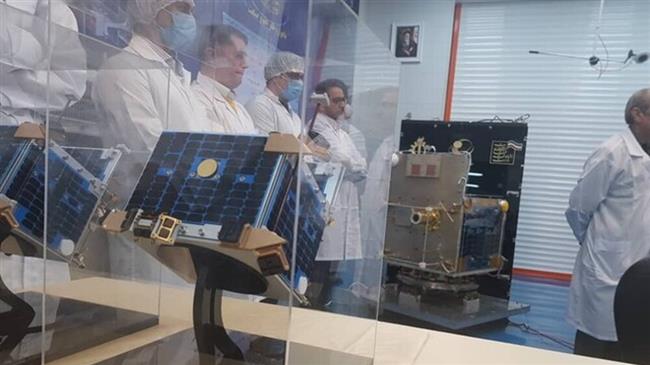Iran’s Zafar observation satellite to be launched by weekend: ICT Minister
Iran's minister of information and communication technology (ICT) says the country will launch its Zafar (Victory) observation satellite by the end of the Iranian week (February 7) to orbit the Earth at an altitude of 530 km.

Taking to his official Twitter account on Monday, Mohammad Javad Azari Jahromi said, “We are not afraid of failure and do not lose hope… Zafar satellite will be launched by the end of this [Iranian] week to reach 530-km orbit.”
He then expressed hope that the launch will open a new chapter in Iran’s space activities.
The minister’s remarks came after head of the Iranian Space Agency (ISA) Morteza Barari announced earlier the same day that the Zafar satellite, designed and manufactured by the scientists and elite students of Iran University of Science and Technology, would be placed in orbit in one of the two weekend days of Thursday or Friday.
“The Zafar satellite is set to be launched by a Simorgh carrier to be put in the 530-kilometer orbit, after which we will be able to provide various services to the people and society,” Barari said in an interview with Iran’s Fars News Agency on Monday.
The ISA head reaffirmed, “The Zafar satellite is capable of collecting images, providing telecommunication services and detecting space signals.”
“The Zafar satellite has general applications and, in the near future, the important sectors of science, technology and environment will be all witnessing changes through using this national product,” he added.
In January, Iran launched its Payam (Message) satellite into space with an aim to collect data on environmental change; however, technical problems that occurred during the final stage of the launch prevented the spacecraft from reaching orbit.

Watch Iran’s launch of domestically-built satellite into spaceWatch Iran
The launch of its carrier rocket was preceded by warnings from Washington, which claimed Iran’s space rocket launches would violate a 2015 UN Security Council resolution, because they use ballistic missile technology.
Resolution 2231 merely “calls on” Iran “to refrain from any activity related to ballistic missiles designed to be capable of delivering nuclear weapons.”
Iran maintains it has no intention of acquiring nuclear weapons, and says its aerospace activities are peaceful and do not violate the Security Council resolution.

FM Zarif says Iran to continue aerospace program despite US warnings Zarif says Iran will continue with its aerospace program despite US warnings.
Iran launched its first locally-built satellite, Omid (Hope), in 2009. The country also sent its first bio-capsule containing living creatures into space in February 2010, using Kavoshgar (Explorer)-3 carrier.
In February 2015, Iran placed its domestically-made Fajr (Dawn) satellite into orbit, which is capable of taking and transmitting high-quality photos to stations on Earth.







